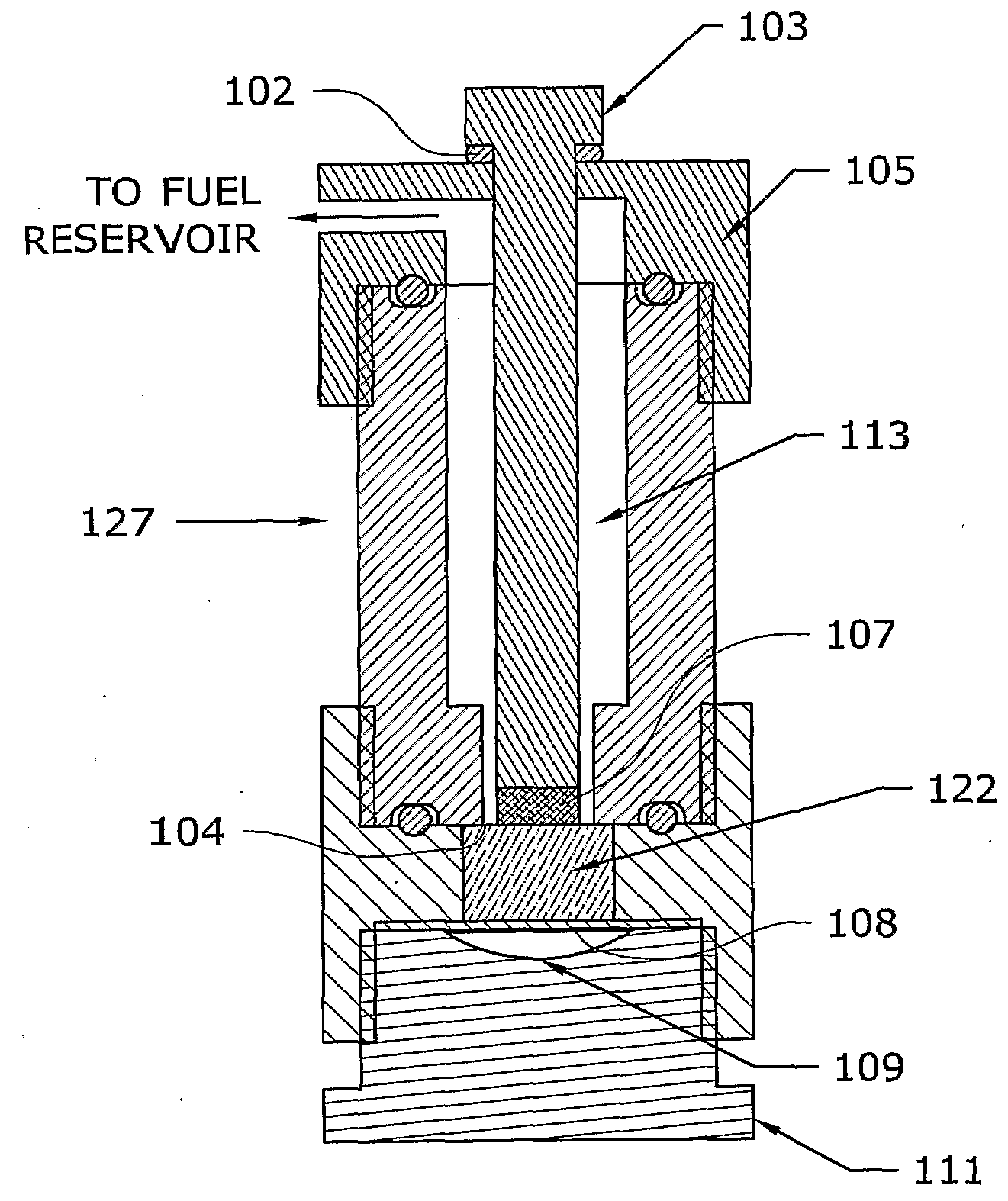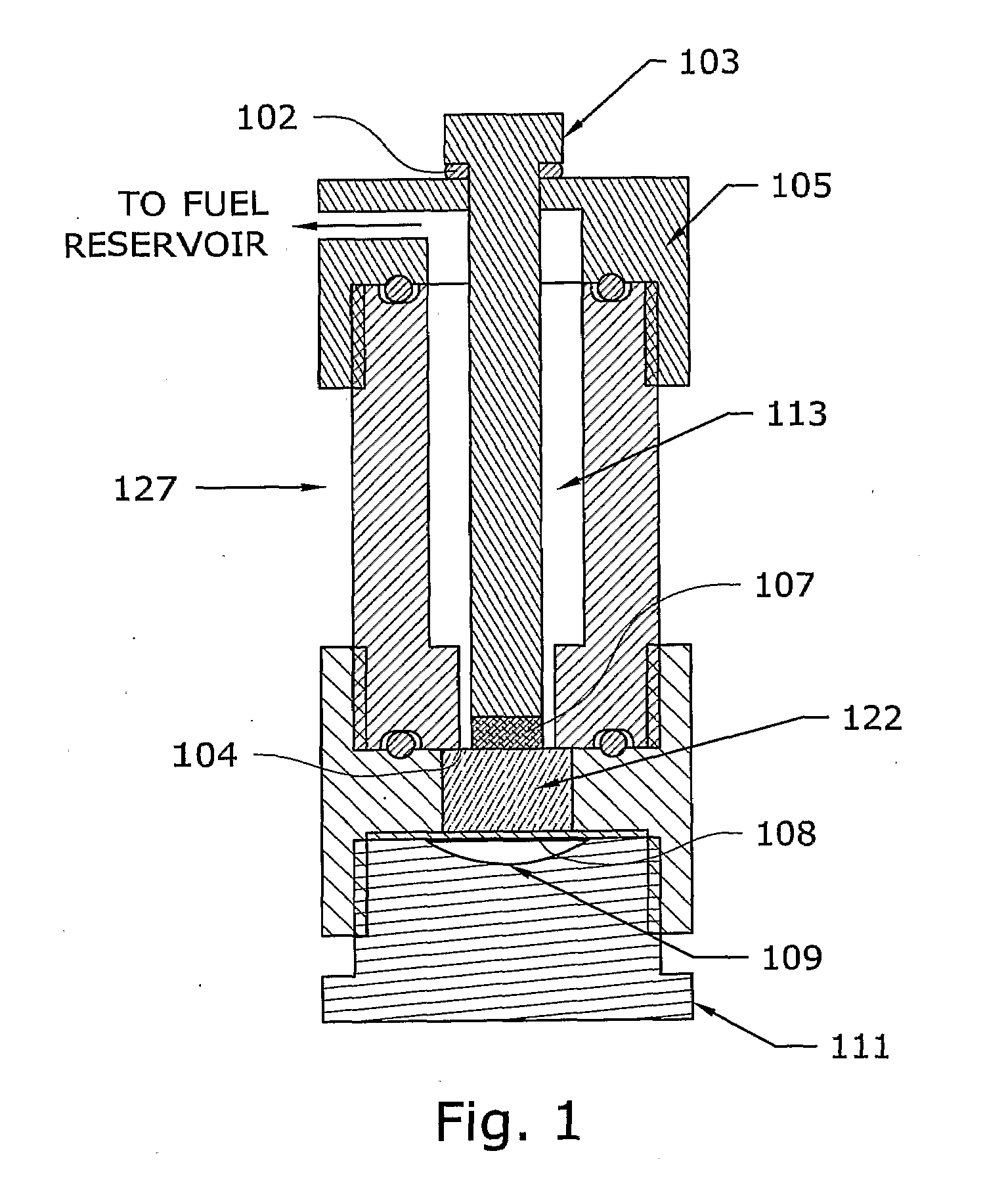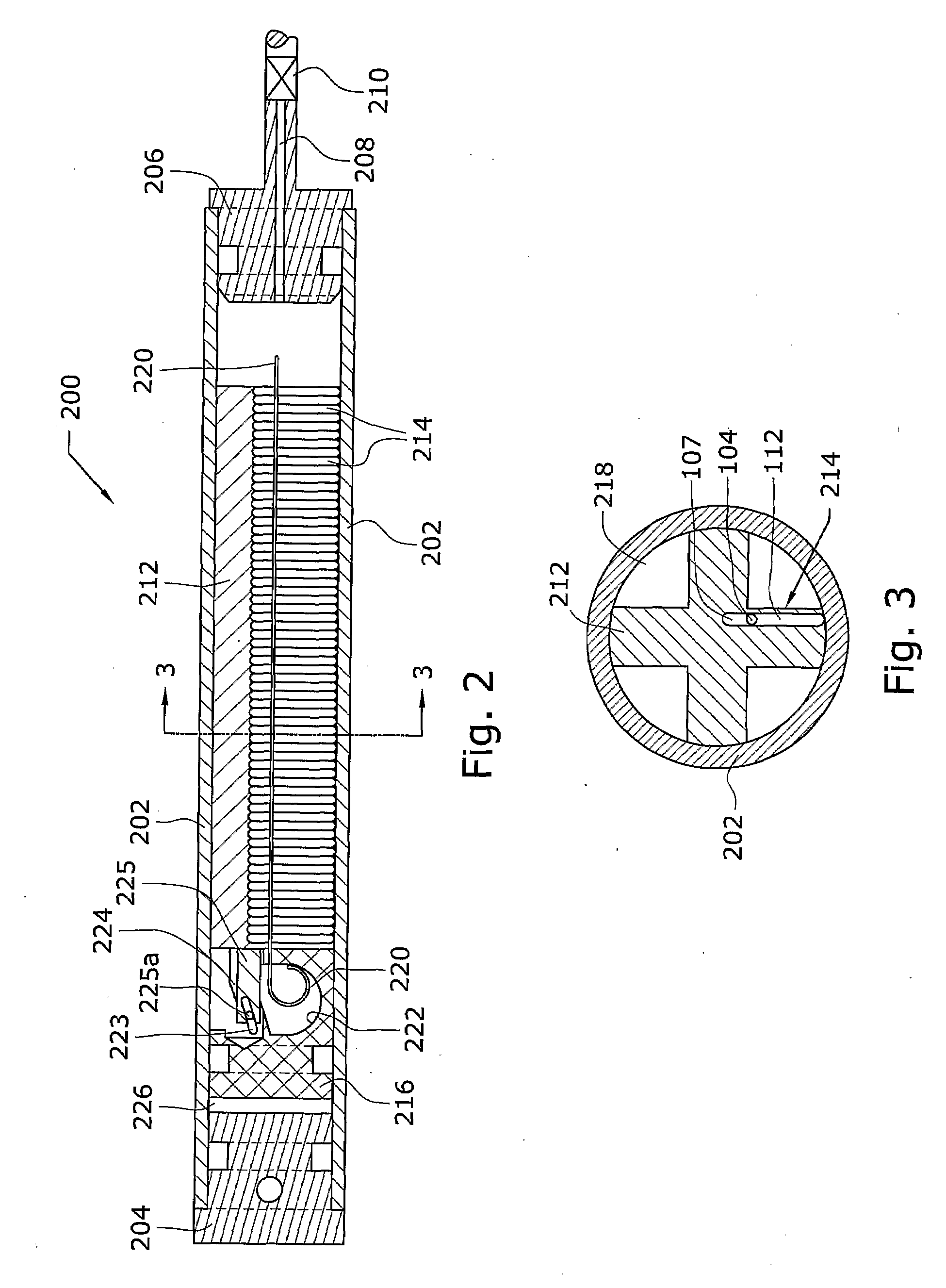Fuels for Hydrogen Generating Cartridges
a hydrogen generating cartridge and fuel technology, applied in the direction of electrical equipment, engine components, electrochemical generators, etc., can solve the problems of insufficient smallness, large storage tanks are typically required, and chemical metal hydride fuels cannot achieve the desired energy density for portable electronic devices, etc., to achieve the effect of increasing the amount of hydrogen produced or released and reducing the volume of the hydrogen generating cartridg
- Summary
- Abstract
- Description
- Claims
- Application Information
AI Technical Summary
Benefits of technology
Problems solved by technology
Method used
Image
Examples
first example
[0041]A 0.1 gram dose of solid sodium borohydride solid reactant was added to 17.6 ml (17.326 grams) of the prepared liquid reactant. The weight ratio between sodium borohydride to liquid reactant is about 1:173 and to water is about 1:146. The calculations hereafter use the weight ratios between the solid sodium borohydride and the total liquid reactant, instead of the ratios between the solid sodium borohydride and water, because the hydrogen generating apparatus or cartridge also has to carry the catalysts, acids and anti-freezing agents.
[0042]In this example, the volume of liquid was chosen to ensure that all of the available sodium borohydride is reacted, and the chosen volume is more than the volume required by the stoichiometric / mass balance equations discussed above. The reactants were placed in a fixture having a volume of 87.4 ml. Hence, the volume available for the hydrogen is substantially the difference between the volume of the fixture and the volumes of the reactants,...
second example
[0055]In contrast to the first example, a dose of the prepared liquid reactant was added to a larger dose of the solid sodium borohydride. A 0.31 gram dose of the prepared liquid reactant was applied onto 2 grams of sodium borohydride. The amounts were chosen to allow direct contact of all the prepared liquid reactant to the sodium borohydride. A larger amount of sodium borohydride is not necessary, because the liquid cannot physically contact more of the solid reactant. The results reported below are limited to the present formulation and other formulations may have improved or better results and utility. The pressure, mass, mass generation rate and run time curves were generated similar to the procedures described above, and are shown below.
[0056]These graphs show that for the second example, it took approximately 70 minutes, which is considerably longer than in the first embodiment, to reach the maximum pressure of about 19.1 psi, which is a considerably lower pressure than in t...
third example
[0063]In this example, the liquid reactant is prepared as follows:
Distilled H2O7.25gramsCH3OH1.00gramCoCl20.34gramH2SO40.90gram(90-92% concentration)Total9.49grams
[0064]This prepared liquid reactant has a measured pH of about 0.15. The prepared liquid has a volume of about 9.18 ml (or cc) based on known specific gravities of the liquids. Doses of 1 ml (1.03 grams), 0.75 ml (0.78 gram) and 0.5 ml (0.52 gram) of the prepared liquid reactant were prepared and mixed with 0.1 gram of sodium borohydride in a mixing chamber with a volume of about 70 ml. The following results were obtained.
LiquidMaxH2 producedNaBH4Reactantpressure(ideal = 0.0213 g)Efficiency0.1 gram 1.03 grams55 psi0.02233 gram~100%0.1 gram0.78 gram55 psi0.02233 gram~100%0.1 gram0.52 gram50 psi0.02018 gram ~90%
[0065]The results in the above table suggest that more hydrogen than the hydrogen stored in the sodium borohydride and water was released. This can be caused by possible experimental uncertainty from the measuring equ...
PUM
| Property | Measurement | Unit |
|---|---|---|
| temperature | aaaaa | aaaaa |
| pH | aaaaa | aaaaa |
| composition | aaaaa | aaaaa |
Abstract
Description
Claims
Application Information
 Login to View More
Login to View More - R&D
- Intellectual Property
- Life Sciences
- Materials
- Tech Scout
- Unparalleled Data Quality
- Higher Quality Content
- 60% Fewer Hallucinations
Browse by: Latest US Patents, China's latest patents, Technical Efficacy Thesaurus, Application Domain, Technology Topic, Popular Technical Reports.
© 2025 PatSnap. All rights reserved.Legal|Privacy policy|Modern Slavery Act Transparency Statement|Sitemap|About US| Contact US: help@patsnap.com



